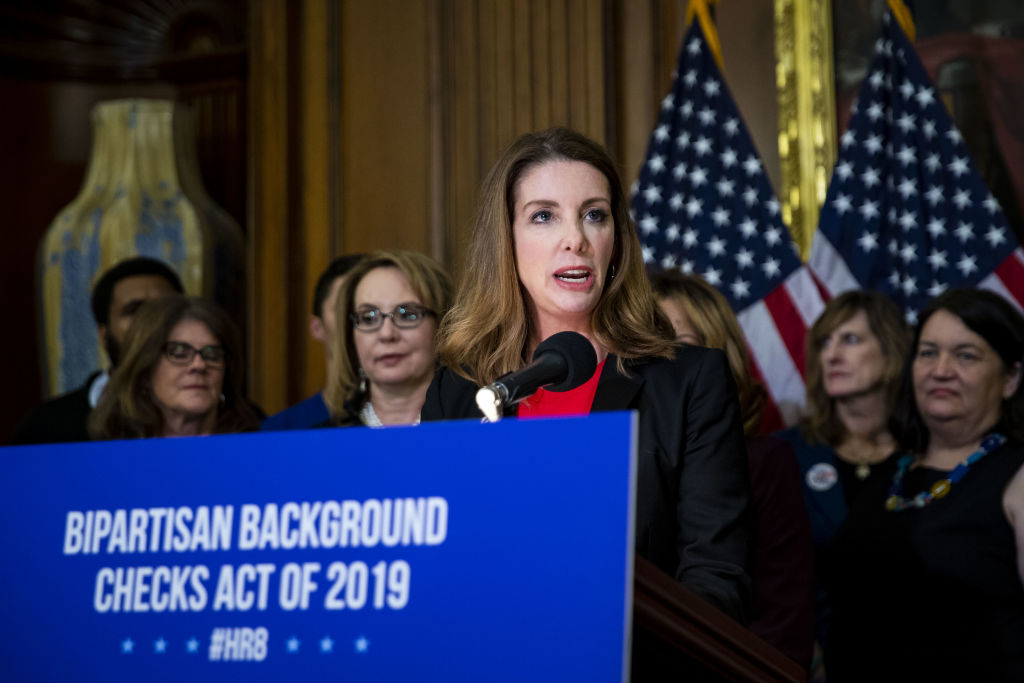
La’Shea Cretain had just finished feeding her 4-month-old daughter when her ex-boyfriend arrived unannounced at the home in Opelousas, La., that she was visiting and shot her in the head before killing himself. Cretain, who was 18 at the time, collapsed at the front door, just feet from her infant daughter and toddler son.
Twenty-three years later, Cretain still suffers from chronic pain and back issues from the five bullets stuck in her body, including one lodged in her spine. That’s on top of the emotional trauma she and her children—who grew up knowing their mother was nearly killed in their presence—have had to grapple with since the shooting on Oct. 3, 1996. “We’ll never be the same,” says Cretain, who is now a 41-year-old gun violence prevention advocate. “This is just something that will be with us.”

Nearly 1 million women in the U.S. today who have survived being shot or shot at by an intimate partner share Cretain’s journey, researchers say. Yet, more than two decades after Cretain’s shooting, women and children in the U.S. are hardly any safer from domestic abuse or from violence outside the home by intimate partners—and guns are largely to blame. Intimate partner homicides that involve firearms are increasing, research shows, while those involving other weapons, like knives, are falling. Between 2010 and 2017, intimate partner homicides that involved guns increased by 26%, a study found in March.
According to new data released Thursday by the gun control group Everytown for Gun Safety, 80% of children killed in mass shootings—defined as those in which at least four people other than the shooter died—were shot in incidents tied to family or intimate partner violence between 2009 and 2018. In a recent murder-suicide that shook the community, a Massachusetts man shot and killed his wife and their three children—an 11-year-old girl and 9-year-old twins—before turning the gun on himself, authorities said. The family of five was found dead in its Abington, Mass. home.
“It’s undeniable that gun ownership plays a really important part in all of this,” says Sarah Burd-Sharps, the director of research at Everytown. “This is an enormous issue that’s affecting families, and especially the next generation, in a way that we really have to get on top of.”
Nearly half of all female homicide victims are killed by a current or former dating partner, according to a 2017 study by the U.S. Centers for Disease Control and Prevention. Black women in the U.S. are twice as likely as white women to be fatally shot by an intimate partner, gun control advocates say, and young black women are almost three times more likely to be shot and killed by an intimate partner than white women in the same age group. On average, 24 people per minute—and more than 12 million men and women every year—are victims of rape, physical violence or stalking by an intimate partner in the United States, according to the National Domestic Violence Hotline. In 2018, the hotline received more calls and messages than in any year since the organization’s inception in 1996.
“Every country is home to domestic abusers. Only America gives them easy access to an arsenal and ammunition,” says Shannon Watts, who founded the gun control advocacy group Moms Demand Action. According to Watts, women in the U.S. are 21 times more likely to die by firearm homicides than women in other high-income nations. “Guns are so easily accessible in this country,” she says. “When you combine domestic violence with guns, it becomes all the more lethal.”
"Every country is home to domestic abusers. Only America gives them easy access to an arsenal and ammunition."
Firearms are tools of abusers even if they are never fired. Giovanna Rodriguez lived in fear “every single day” when she was with her ex-husband, who she says constantly reminded her he was carrying a gun and could kill her at any time. “If we were going to the park, if we were going to a museum, if we were going to a beach, that gun was always there,” she says. “I had to ride along with a gun always present, and it was as a means of intimidation.”
Thursday’s findings on guns and intimate partner violence support those from a handful of related studies released earlier this year. One study found that after nearly four decades of decline, intimate partner murders are now on the rise, due to guns. A January study, based on data from 16 states, found nearly two-thirds of child fatalities involving intimate partner violence were caused by firearms. Another study found gun ownership rates are tied to domestic homicides, but not to other gun-related homicides such as those that occur during a robbery.
Despite growing evidence that an increased rate of gun ownership disproportionately endangers women and children in abusive homes, laws have not evolved enough to address the uniquely American issue, gun control advocates and domestic abuse survivors say. “We have an unforgivably high rate of intimate partner violence homicide in this country,” Burd-Sharps says, “and yet we know what can protect women.”

Researchers have found evidence that so-called red flag laws, or extreme risk laws, which allow courts to take guns from potentially dangerous people, may prevent some killings, including suicides. A recent study by the University of California Davis School of Medicine cited 21 cases in which such a law in California was used to help prevent potential mass shootings in the state. Other studies have found that red flag laws led to reductions in firearm suicide rates in Connecticut and Indiana, which are among at least 17 states that have versions of the measure in place. “We have every logical reason to think that these gun seizure laws would have an effect on reducing partner homicides,” says Aaron Kivisto, the lead author on the recent study that examined the differences between domestic and non-domestic homicide rates.
Under current federal law, domestic abusers are prohibited from having firearms if they’re the subject of a domestic violence restraining order or if they’ve been convicted of certain crimes. But the law only applies to those who are or were spouses, or who lived together or share a child. It does not include dating partners, a lapse sometimes referred to as the “boyfriend loophole.” A new provision introduced as part of the Violence Against Women Act (VAWA), a 1994 law that helps victims of domestic and sexual violence, would prevent those convicted of abusing, assaulting or stalking a current or former dating partner from buying or owning a firearm. However, VAWA needs to be reauthorized by Congress every few years, and the Senate has not yet approved its renewal, even though the House has.
Amid the inaction, advocates say an estimated average of three women every day will continue to be killed by intimate partners. Cretain hopes she can save at least one victim by speaking up about her experience. Two months before she was shot, when her ex-boyfriend started stalking her at work, Cretain panicked and reported his history of abuse to the police. She knew he had a gun and felt her family was in danger, but after authorities took down her complaint, she says nothing changed.
“I strongly believe that if law enforcement, during that time, had the tools available,” she says, “I wouldn’t be suffering with these five bullets.”
More Must-Reads From TIME
- Dua Lipa Manifested All of This
- Exclusive: Google Workers Revolt Over $1.2 Billion Contract With Israel
- Stop Looking for Your Forever Home
- The Sympathizer Counters 50 Years of Hollywood Vietnam War Narratives
- The Bliss of Seeing the Eclipse From Cleveland
- Hormonal Birth Control Doesn’t Deserve Its Bad Reputation
- The Best TV Shows to Watch on Peacock
- Want Weekly Recs on What to Watch, Read, and More? Sign Up for Worth Your Time
Write to Madeleine Carlisle at madeleine.carlisle@time.com